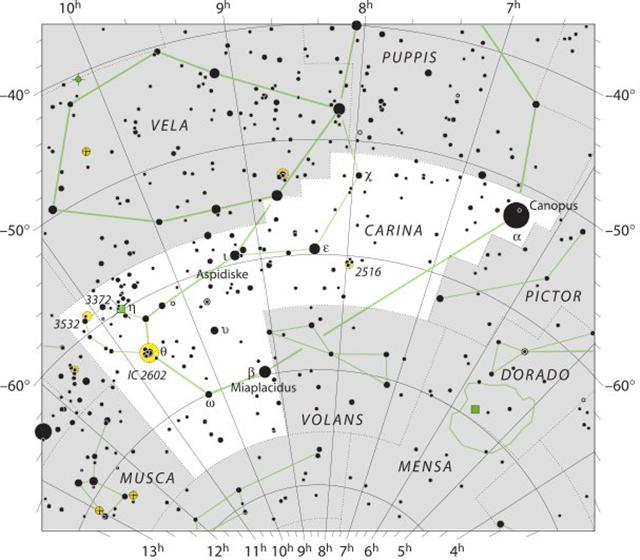|
2. In my astronomy book the constellation Carina is depicted like this:  Tureis and Miaplacidus are like cornerstones in a construction which resembles the outline of the 'hole' in the glyph type heuheu:
But to see this we should look towards the sky in the east with the horizon in the west at our backs. The arrangement with a pair of birds defining an opening would then have Miaplacidus as the bird in the south (left) and Tureis as the bird in the north (right). It may be a coincidence but the Egyptian configuration with a pair of 'birds' in the north (left) and in the south (right) - oriented with the horizon in the east in front - could be the same image 'archetype'. See in the chapters The Weak One and Orientation:  ... The central role is taken by the scarab (Sun) rising above his 'door' in the east. At left (= in the north) is the goddess of Lower Egypt and in the south (right) is the goddess of Upper Egypt (appropriately illustrated by a high crown). The crown of Pharaoh had elements from the crowns of both these goddesses. The 'tearline' indicates 'low' ... ... Time runs (like the river Nile) from on high (Upper Egypt) down towards the sea (Lower Egypt). But the scroll sign could very well be something else than the proboscis of a butterfly. What I do suggest is that the idea of the 'life spirit' flying away from the dead body could be a reflection of what happens when a butterfly creeps out from his dry old 'carapace' ... With the scarab located at or close to our Cancer constellation, my idea leads to a conclusion that a 'new Sun' should be emerging in the 9th hour, presumably in Praesaepe (the yellow area just above the ecliptic):
The head of Hydra is rising at the same time, forming an outline not quite like a square - there are 5 ('fire') stars and an opening between ε and ρ which leads to ζ:
Further down is Carina and there is a pair of stars (χ and ε) between Canopus and the 'cornerstones' (Miaplacidus and Tureis):
"The name Avior is not a classical in origin. It was assigned to the star by Her Majesty's Nautical Almanac Office in the late 1930s during the creation of The Air Almanac, a navigational almanac for the Royal Air Force. Of the fifty-seven navigation stars included in the new almanac, two had no classical names: Epsilon Carinae and Alpha Pavonis. The RAF insisted that all of the stars must have names, so new names were invented. Alpha Pavonis was named 'Peacock', a translation of Pavo, whilst Epsilon Carinae was called 'Avior' ..." (Wikipedia) |





